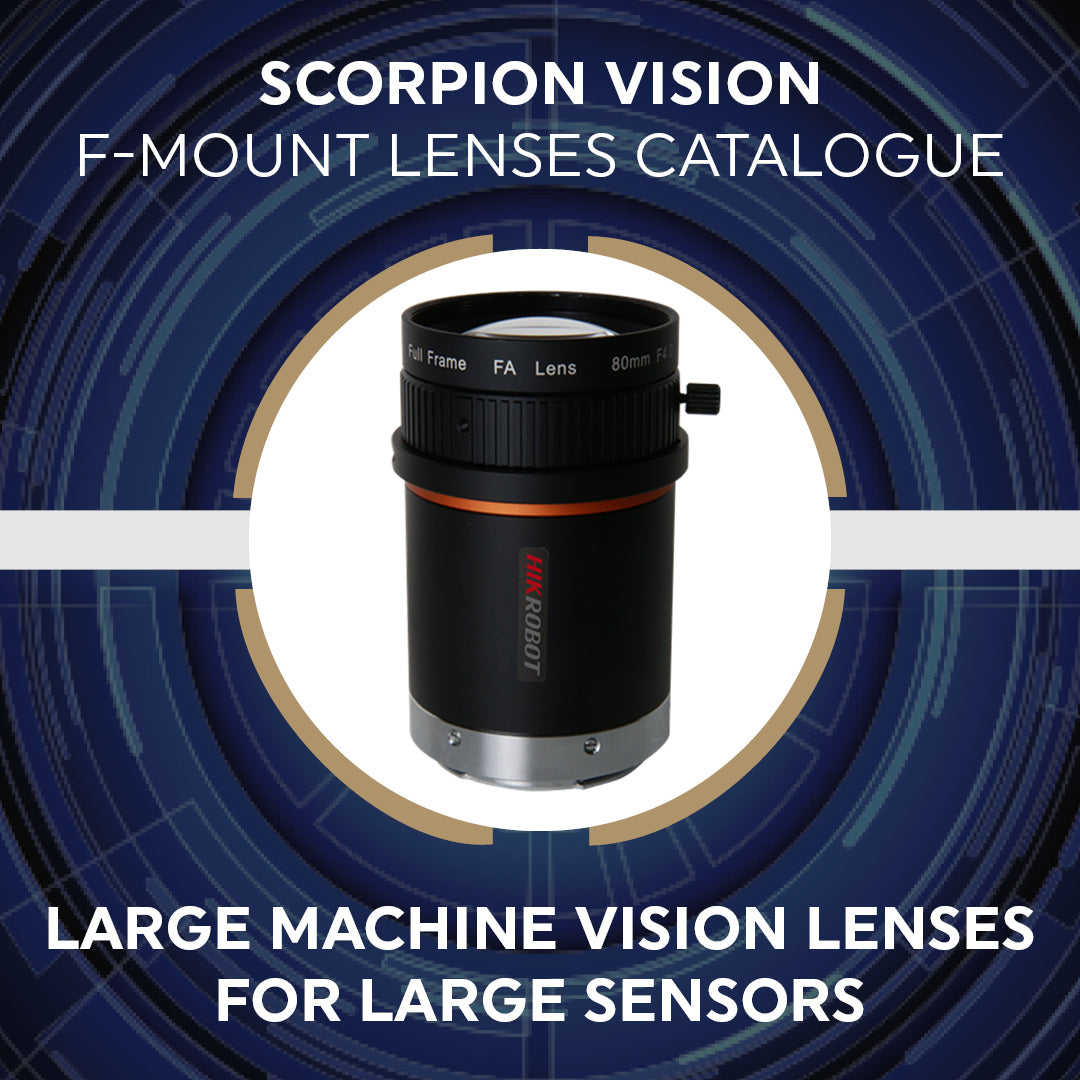I. Introduction

Selecting the right optics for your machine vision application is crucial, as it directly impacts image quality and overall system performance. With a variety of lens options available, understanding their compatibility with different sensors is essential. This knowledge enables you to make informed decisions and optimise your machine vision system for your specific requirements.
II. Understanding Machine Vision Optics
Before selecting the right lens for your machine vision application, it's essential to understand the key terminologies and concepts that define the optics. These include focal length, F-number, horizontal field of view (HFOV), resolution, and sensor size.
Focal length refers to the distance between the lens and the image sensor when focused on an object at infinity. It determines the magnification and field of view of the lens. The F-number, also known as the aperture, is the ratio of the focal length to the diameter of the lens opening. It impacts the amount of light entering the lens and the depth of field.
Horizontal field of view (HFOV) defines the angle at which the lens can capture an image. It is dependent on the focal length and sensor size. Resolution, on the other hand, is the measure of the smallest distinguishable detail in an image, often expressed in megapixels or line pairs per millimetre. Sensor size refers to the physical dimensions of the image sensor, which is crucial for lens compatibility.
There are several types of lenses used in machine vision applications, such as C-Mount, M12, and F-Mount lenses. C-Mount lenses are versatile and compatible with various optical formats, with an image circle diameter ranging from 5 to 22mm. M12 lenses, also known as board or S-Mount lenses, are compact and commonly used in embedded vision systems. F-Mount lenses are designed for larger sensors and often used in applications requiring high-resolution imaging.
III. C-Mount Lenses
C-Mount lenses are a popular choice for machine vision applications due to their characteristics and specifications. They feature an image circle diameter ranging from 5 to 22mm, making them compatible with various optical formats. This versatility allows C-Mount lenses to be used across a wide range of applications, providing flexibility in system design.
When selecting the right C-Mount lens for your application, it's essential to match the lens to the sensor. This ensures optimal imaging performance and prevents issues such as vignetting or reduced resolution. Additionally, consider factors such as focal length, F-number, and horizontal field of view (HFOV) to tailor the lens to your specific requirements.
Azure C-Mount lenses are a noteworthy option, offering features and specifications suitable for a variety of applications. They are available in formats such as 1/2" and 2/3", with resolutions ranging from 2MP to 10MP. These lenses cater to a diverse set of applications, providing reliable imaging performance for machine vision systems.
IV. M12 Lenses
M12 lenses, also known as board or S-Mount lenses, are compact and lightweight, making them ideal for use in embedded vision systems and applications with limited space. While specific characteristics and specifications are unavailable in the provided references, it is crucial to consider these factors when choosing the right M12 lens for your application.
As with any lens selection, understanding your application requirements, such as image quality, resolution, and working distance, is vital. Additionally, consider the compatibility between the M12 lens and the image sensor to ensure optimal imaging performance. By assessing these factors and seeking expert guidance, you can select the most suitable M12 lens for your machine vision application.
V. F-Mount Lenses
F-Mount lenses are characterised by their use for larger sensors, making them ideal for applications requiring high-resolution imaging. These lenses have specific sensor size compatibility, which is essential to consider when selecting the right lens for your machine vision system.
To choose the right F-Mount lens for your application, it is crucial to check compatibility with the sensor. Manufacturers typically list sensor size in millimetres for these lenses, but sensors are often quoted with the old-fashioned conventional inches. Ensuring compatibility between the lens and the sensor is vital for optimal performance.
In addition to sensor compatibility, consider factors such as focal length, F-number, back focus, horizontal field of view (HFOV), and resolution when selecting an F-Mount lens. By thoroughly assessing these factors and understanding your application requirements, you can make an informed decision and choose the most suitable F-Mount lens for your machine vision system.
VI. Factors to Consider When Choosing Optics for Machine Vision Applications
When selecting the right optics for your machine vision application, it's crucial to first understand your application requirements. Consider factors such as image quality, resolution, field of view, and working distance. These requirements will help guide your decision and ensure optimal performance.
Matching the lens to the sensor is another critical aspect. Ensure the sensor size and resolution compatibility align with the lens specifications. This matching process prevents issues such as vignetting or reduced resolution, which can negatively impact image quality.
Lastly, evaluating lens performance is essential. Consider factors such as distortion, chromatic aberration, and vignetting. These optical aberrations can degrade image quality and affect the overall performance of your machine vision system. By thoroughly assessing these factors and seeking expert guidance, you can make an informed decision and choose the most suitable optics for your application.
Get Expert Assistance for Optics Selection
Selecting the right optics for your machine vision application is crucial for achieving optimal system performance. Understanding your application requirements, matching the lens to the sensor, and evaluating lens performance are essential factors to consider. However, navigating these complexities can be challenging without the right expertise.
At Scorpion Vision, our 25 years of experience in imaging and extensive range of camera types, lens options, and accessories make us well-equipped to assist you in finding the perfect solution for your machine vision needs. Don't hesitate to contact us for expert guidance on selecting the right optics for your specific application.

